Fokker. Man and plane. Part two
The superiority of its monoplanes in the early years of the war (the Allies then spoke of the "Fokker terror" in the air) put the vigilance of the German command to sleep. It did not introduce new types of fighter aircraft. Allies frantically developed new cars, also with synchronized weapons, - and already in the summer of 1916, in the Battle of the Somme, the French and British airplanes did not meet with tangible opposition from the German Air Force. Allied fighters outnumbered the Germans in their climb and maneuverability. One of the Ases (Belke) suggested that it was all about the shortcomings of the mono-plan, and that switching to biplanes and triplanes would save the situation. This prompted the Germans to weaken their attention to the improved Fokker fighter - a single biplane. While designing it, Fokker was counting on a 160-strong motor. But all these engines were going to the competing company Albatros (its leaders took advantage of connections in the higher spheres), and the 120-strong engine had to be installed on the Fokker biplane. Tests showed a clear superiority of the Albatross, and the company Fokker from leading immediately turned into second-rate. Straining all his strength, Anthony sought to regain lost reputation. In this struggle, both the best and the worst aspects of his character were revealed. Not having connections in the highest circles of the administration, he decided to rely on the experience of front-line pilots, for whom the plane was not an object of intrigue, but a matter of life and death.
At the same time, Fokker’s mutual understanding with the pilots contributed to the abundant libations, and spree in Berlin restaurants, and the Dutchman’s personality itself. In his 25 — 28’s years, Anthony was a short, mobile, sturdy man, completely devoid of the importance and sanity without which the German man in the street couldn’t imagine “Herr Director”.
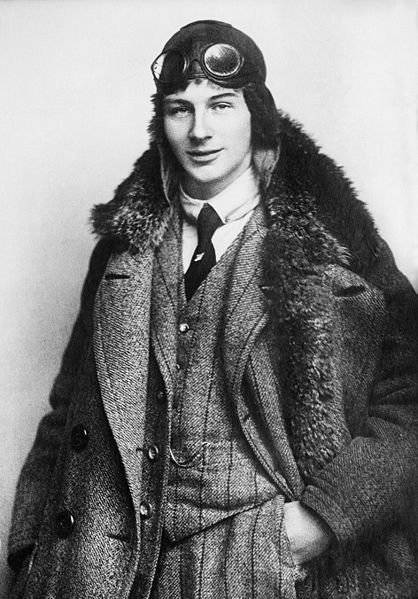
They say that once members of the Austrian commission, after examining the Schwerin factory, they wanted to meet with the director of the company Fokker Sr.: it never occurred to them that the smiling fellow, who kindly threw open the doors to them and gave an explanation, is the head of the company. The crown prince was also mistaken when meeting with Fokker at Verdun in May 1915: he asked Anthony if his father had invented the synchronizer.
In addition to the ease of handling and age proximity to Fokker, the pilots were impressed by his pilot skills. IN aviation circles were legends about how he flew under the Elizabeth Bridge in Budapest, about the figures that he made, and at a low height. Naturally, Antoni, better than many other German designers, understood combat pilots and made every effort to meet their requirements. The weighty word of the aces often overturned the intrigues of competitors. This was especially evident in the creation of a biplane fighter. Not having received 160-horsepower engines due to the intrigues of the Albatross company, Fokker built a number of biplanes with less powerful engines. At the end of April 1917, Fokker visited the 11th Squadron (Jasta 11) and met Manfred von Richthofen. During the conversation, the famous ace said that recently, on April 20, he conducted several training fights on his Albatross, and the rival pilot on the captured Sopwith triplane did not give him the slightest chance either in attack or maneuver ... Fokker thought over Richthofen's proposal in just a month and a half, and already on June 13 gave the task to Reinhold Platz, the head of the prototype bureau, to convert the biplane sample under construction into a triplane. Conversion into a triplane began at the construction stage of the biplane. Even before D.VI was ready, the Technical Department of the German Army learned about the tests and showed interest in him, offering to finance this project. Lieutenant Werner Voss, ace and friend of Anthony Fokker, visited his plant in Schwerin, and participated in the tests of the D.VI.
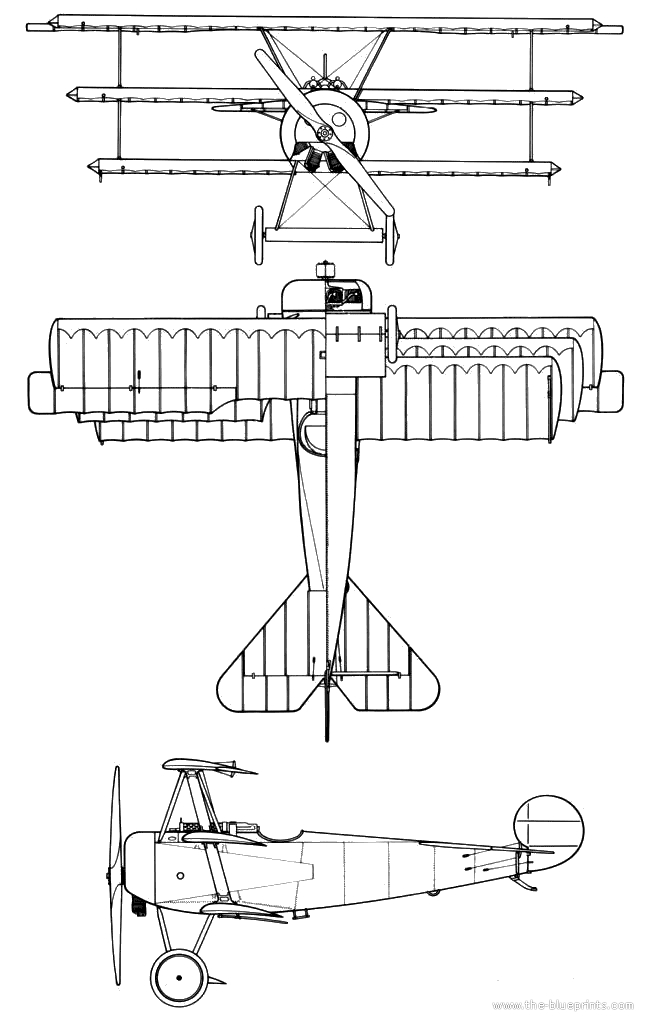
The technical department of the German army paid for the construction of three samples, and according to its ordering policy, Fokker was obliged to build two modifications - one with a rotary air-cooling motor and the other with an in-line water-cooled motor. On July 7, he issues a task to the design bureau for the construction of a D.VI modification with a Mercedes engine with a power 160 hp. This modification received the designation D.VII. The plane was very heavy - take-off weight 880 kg. Several upgrades and short follow-up tests failed to improve the unimportant flight characteristics of the D.VII.
14 July 1917, the Technical Office issued an order to Fokker for a series of twenty Fokker Dr. "Dreidecker" (German. Triplane) with air-cooled engines. Fokker triplane with 120-strong engine like the pilots. "This plane," they said, "soars into the air like a monkey, and maneuvers like the devil himself!" However, the pilots' delights calmed down when Fokker triplanes began to break when they left the dive. October 30 1917, Lieutenant Guntermann, the commander of Jasta 15, wrote in his diary: "I hope that we can have more success than Richthofen's squadron, where Wolf and Foss died." His hopes were not justified. On the same day, he performed aerobatics at an altitude of 700 meters above the airfield, when his triplane went out of control and crashed. Lieutenant Gunthermann was badly wounded and died in hospital the next day. Witnesses observing his crash reported that they had seen a piece of fabric come off the upper wing and the plane began to fall apart in the air. On the same day, October 30, Manfred von Richthofen flew with his brother Lothar when the engine failed on Lothar’s triplane and he made an emergency landing. Manfred decided to land next to his brother when one of the cylinders blasted off the engine of his plane, and he crashed on Fokker Dr.I, getting off with a slight fright. The next day, Lt. Pastor from Jasta 11 crashed and died on Fokker Dr.I.
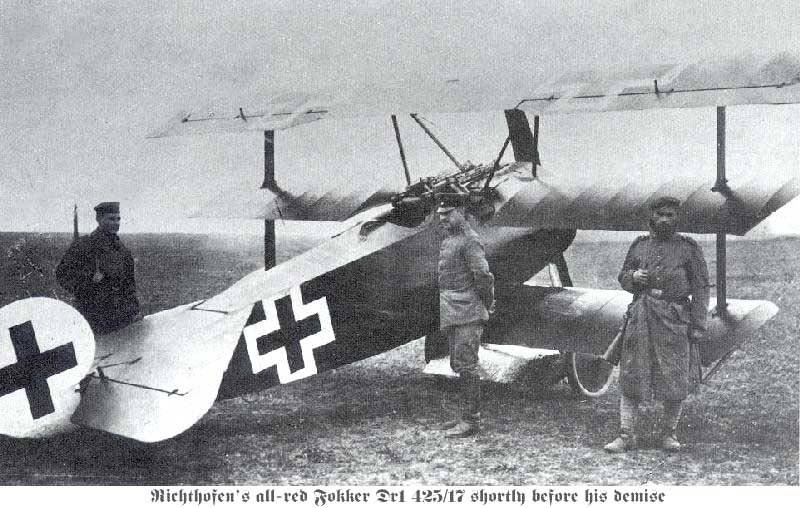
Due to the rapid growth in the number of accidents on triplanes, they were forbidden to fly, and the fighter divisions returned to operating the Albatross DV and Pfalz D.IIIa fighters, although all pilots hoped that the cause of the destruction of the wing would be quickly resolved and allowed to fly.
The triplane release was renewed on November 28 of the year 1917. All previously set up triples Fokker had to be redone. The production of the "Dredekkerov" ended in April 1918, was built around 320 Fokker Dr.I, they were in service in combat units only on the western front, from September 1917 to June 1918, but some pilots continued to fight on them until the end of the war.
The Fokker Dr.I Triplane was a very maneuverable aircraft with a good climb rate, these characteristics were determined by the small size of the airframe and the large bearing surface of the wings. But because of the short fuselage in combination with the high drag of the triple box, the Drydekker had low road stability, and as a result, difficult control. German pilots considered the Drydecker as a melee fighter that is more maneuverable than the Spad VII and Sopwith Camel. The main drawback of Dr.I was the insufficient engine power and low speed equal to 170 km / h. Contemporaries fighters were faster than Fokker Dr.I. Sopwith Camel had a maximum speed of 184 km per hour, SPAD VII was much faster - 211 km per hour. Anthony Fokker himself said: "The triplan went up so quickly and was so maneuverable that no one noticed how slow it flew." Only the pilot-aces pilots, such as Manfred von Richthofen and Werner Voss, could fully realize the capabilities of the Drydecker.
The Germans had to pay dearly for the underestimation of powerful aircraft engines! While the Allies launched light engines into 220 and even 300 l. with, the Germans continued to produce heavy 160 — 200-strong, leading their lineage from airships. With them, the German fighters were not sufficiently high-lifting. And then, in order to improve this characteristic of the triplane, Fokker reduced its weight, reduced strength. As it turned out, it is not permissible.
But all this gave Dalok Fokker experience, useful for creating extremely light and durable biplana boxes. In the fall of 1917, Mr. Platz decided to combine a thick cantilever wing with a “traditional” biplane scheme. September 20 began the construction of aircraft V.XI, which was destined to become the prototype of the most successful fighter of the First World War. Anthony Fokker himself wrote about this car in a letter sent to 4 in October to engineer Zeekarts, responsible for the production of aircraft at the Budapest firm MAG: "I would like to inform you that in the experimental workshop, a single-seat biplane with an Mercedes engine and wings without external braces is being assembled . We have high hopes for this car. The wings are designed in such a way that they are completely cantilever and at the same time withstand eight-time overloads, and their weight is less than that of bracing wings having the same strength. My project cantilever wing will be a landmark in the next year. "
As can be seen from the letter, the 27-year-old aircraft designer without false modesty attributed to himself the idea of a free-floating wing. But more importantly in this letter is something else: besides the biplane scheme, the new fighter differed from the “Drydecker” by the use of a six-cylinder in-line engine Mercedes D-IIIa with 160 hp power. with water cooling. This provided the car with a significant increase in power supply and a reduction in drag, although it suggested a slight increase in weight.
Combined with the long-awaited 160-strong Mercedes, the innovative biplane box spawned an excellent fighter. In the new aircraft, much remains of the "triplane", including the welded structure of the fuselage and the plumage with linen skin, as well as thick wooden wings with box-shaped spars, paneled toe and soft rear hem. True, the size of the wings, especially the upper ones, increased significantly, and they became two-spar from single-spar ones.
In January, 1918, both prototypes of the new biplane, were presented by Fokker at the first competition for promising fighter models at Adlershof. The majority of German aircraft manufacturers took part in the competition, presenting their latest developments: several modifications of the Albatross, Pfaltsev, Roland, two Rumplers, four Siemens-Schukert, and one model from Aviatica , Juncker, LVG and Schutte-Lanz. Fokker, in addition to V.XI and V.18, brought two copies of V.13, as well as V.VII - an improved version of the "Drydecker" with an 160-strong Siemens-Halske-based bi-active engine. The list of participants said that the struggle will be very tense, and the choice of the winner will not be easy.
The first stage of the competition was held from 21 to January 28. On it, the leading German aces-fighters, specially withdrawn from the front for a week, flew around in turn all the cars presented, and then presented to the jury their opinion on their advantages and disadvantages. The composition of the "appraisal commission" was very authoritative: Manfred von Richthofen, Bruno Lörzer, Theodore Osterkampf, Erich Lowenhardt, Ritter von Tuchek and a number of other pilots, each of whom conducted dozens of air battles and won many victories.
It is said that during comparative overflights of cars, Manfred von Richthofen, having landed on the Fokker, very positively assessed the car, but noted one important defect - insufficient traveling stability. Such an assessment of the best ace in Germany could put an end to the further career of a fighter. Learning about this, Anthony Fokker with several assistants, taking advantage of the Sunday break in flights, locked themselves in the hangar and redid the fuselage of their aircraft for a day, extending the tail section and adjusting stability. Everything was done so clean that Richthofen, when he was again offered the next day to fly on the Fokker, allegedly did not notice anything and was very surprised that for the first time the stability seemed unsatisfactory to him. Of course, this story - rather a legend, since it is practically impossible to lengthen the fuselage in a day, and even in an unequipped hangar. It is also impossible to imagine that neither Richthofen nor anyone else noticed the changes in the appearance of the car .. Most likely, the legend arose because Fokker put out two similar machines - V.XI and V.18, and on the second of them The stability problem has already been solved. Obviously, Richthofen simply consistently flew around these two planes, giving them appropriate ratings.
The second part of the competition, which ended in mid-February, consisted of scrupulous measurements with the help of control devices of maximum speed and rate of climb of competing machines. This stage took place without the participation of front-line soldiers, and the tests were continued by factory pilots-deliverers. Airplanes with in-line water cooling engines were evaluated separately from machines with star-shaped rotary and birotational engines.
According to the testimony of the instruments, Rumpler 7D4, a small elegant airplane with very clean aerodynamic forms, demonstrated the highest speed and rate of climb. The second place was taken by Fokker V.XI, who, against the background of his main rival, looked rather ugly - larger, angular, with “chopped” rough outlines. However, these external flaws turned out to be a number of advantages: the Fokker turned out to be more technological, cheaper and easier to manufacture than the Rumpler. And in the conditions of the economic blockade experienced by Germany, and the shortage of skilled workers, this was important. In addition, front-line pilots unanimously noted that the Fokker was much easier to fly and more stable in all three planes. All this taken together made the Fokker an indisputable leader, especially since the superiority of the Rumpler in flight data looked extremely insignificant.
Whatever it was, the car of the Fokker company, which was ahead of all competitors, was put into service with German aircraft under the designation Fokker D.VII. This aircraft corresponded exactly to the V.18 prototype, except that its keel was slightly reduced and acquired a triangular shape. In addition, the aircraft used the standard for all German fighters of that time armament - two synchronous machine guns LMG 08 / 15 "Spandau".
The brilliantly proven fighter was immediately put into service, Fokker received an order for 400 machines. To top it off, Fokker’s triumph of his eternal rival, Albatros, was ordered to start making new Fokkers. Their superiority over the "Albatross" was confirmed by another test, not quite ordinary. In the summer of 1918, the Germans put the English pilot Shaw on their airfield and, before sending him to a prisoner of war camp, offered him to fly around the new Fokker and the Albatross. Shaw agreed to this expressed his impressions very eloquently: "Fokker" - great, "Albatross" - shit!
The high combat reputation of the Fokkers led to the fact that after a few months the Germans pledged to first of all transfer them to the allies who had won the war - according to the terms of the truce.
The truce caught Fokker off guard (he was developing and testing more and more new machines for future military orders); and when a revolution broke out in Germany and the Schwerin factory was in the hands of workers, Fokker barely escaped arrest. At night, in secret, he, along with the chief-pilot of the company, rushed from the factory on a motorcycle. Somehow I got to Berlin, and from there, without delay, to Holland.
In those years, caricatures depicted him fleeing with a bag full of one hundred million marks. In fact, Fokker left Germany with the permission of the government, paying all taxes. But he also brought a lot of money: partly on a yacht, partly by diplomatic mail. And besides, taking into account the outrage of the Germans predatory Treaty of Versailles, turned the risky operation. At the direction of Fokker, on far farms, in basements, in the shops, engines and parts of aircraft were hidden, to be destroyed or transferred to the allies. From there they were gradually delivered to railway stations, loaded into wagons. Of these cars throughout Germany, trains gradually formed, which one day gathered in Hanover and went to Holland. The operation was carried out with the secret approval and support of the German government. 350 cars were delivered to Holland, 400 aircraft engines, 200 aircraft were in them. 100 parachutes and a huge number of steel pipes, copper, fittings, rubber tubes, fabrics. Employees Anthony finally became impudent, preparing the last composition: on its open platforms there were planes covered with tarpaulins with huge inscriptions: “Fokker flygtsoyverk - Schwerin”.
The situation in the business world of Western Europe seemed to Fokker hopeless. He got depressed, suddenly got married and ordered a round-the-world voyage in Denmark ...
The ending should ...
Использованная литература:
Pinchuk S. The Fokker Dr.I Dreidecker Fighter.
Kondratyev V. Fighters of the First World War.
Kondratyev V. The Fokker Fighter.
Kondratiev, V., Kolesnikov V. The Fighter Fokker D.VII.
Smirnov G. The Flying Dutchman // Inventor-rationalizer.
Smyslov, O.S. Aces vs aces.
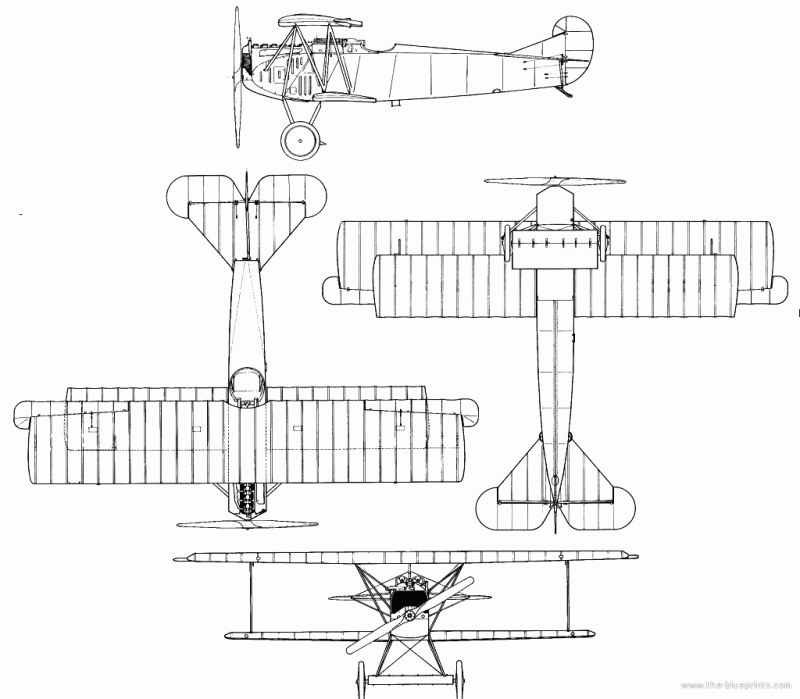
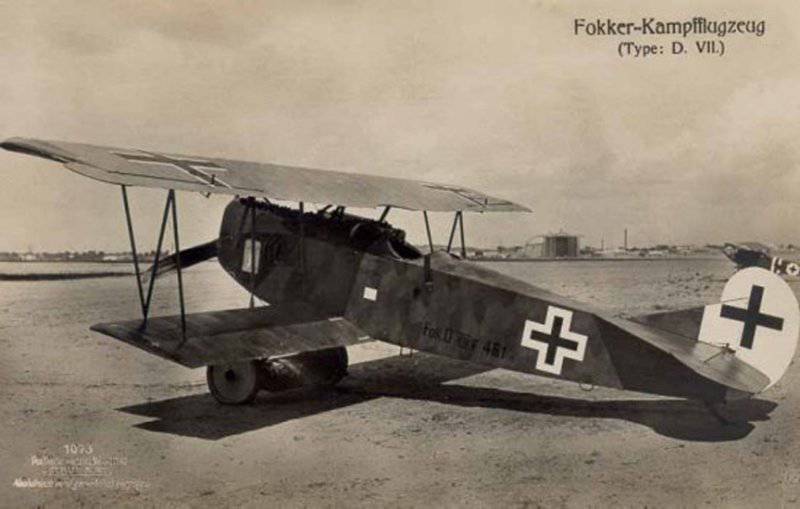
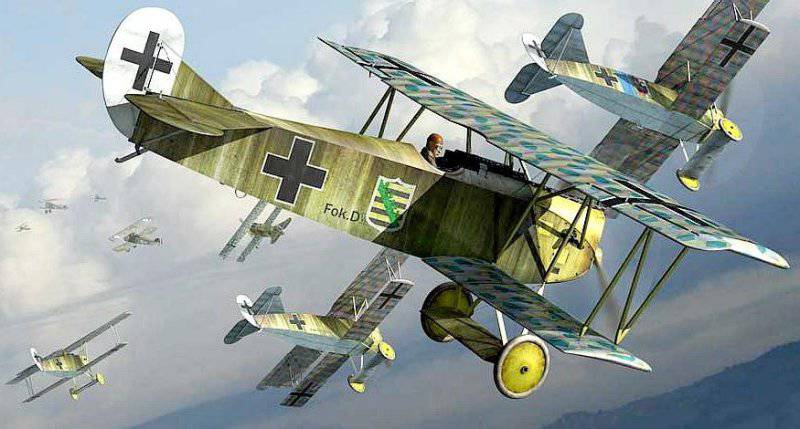
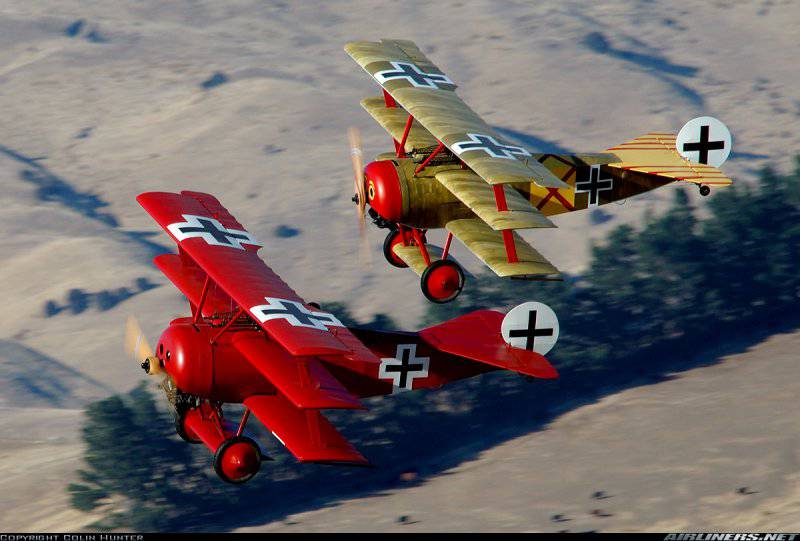
Information